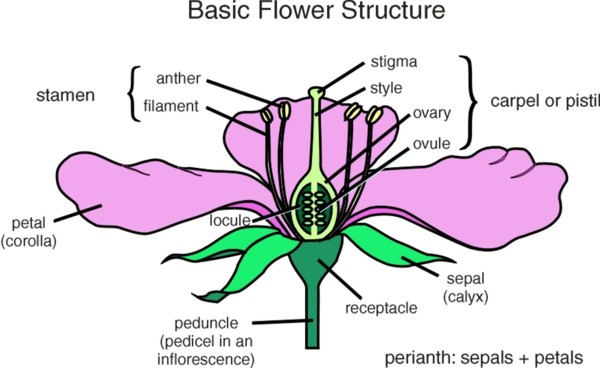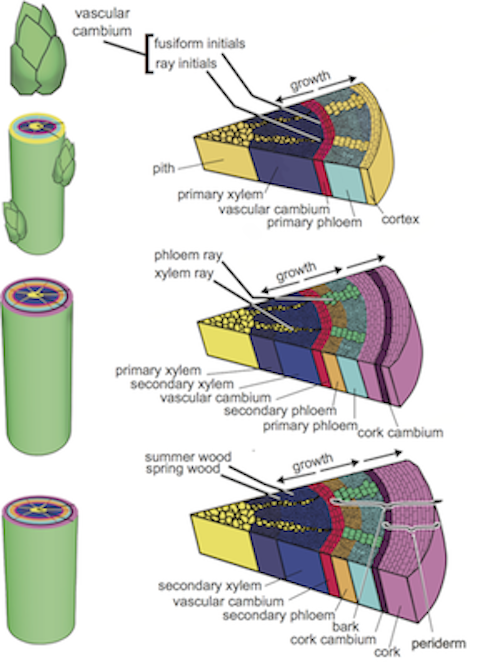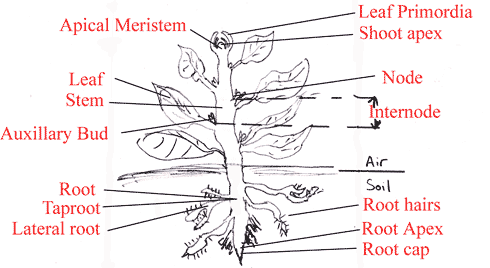Larry
Louis



| MONOCOTS | DICOTS |
| Embryo with single cotyledon | Embryo with two cotyledons |
| Pollen with single furrow or pore | Pollen with three furrows or pores |
| Flower parts in multiples of three | Flower parts in multiples of four or five |
| Major leaf veins parallel | Major leaf veins reticulated |
| Stem vacular bundles scattered | Stem vascular bundles in a ring |
| Roots are adventitious | Roots develop from radicle |
| Secondary growth absent | Secondary growth often present |





